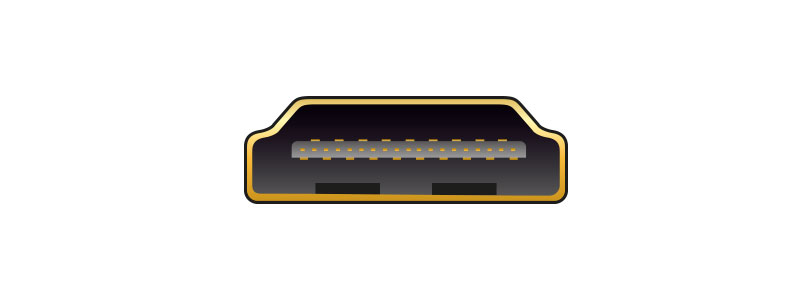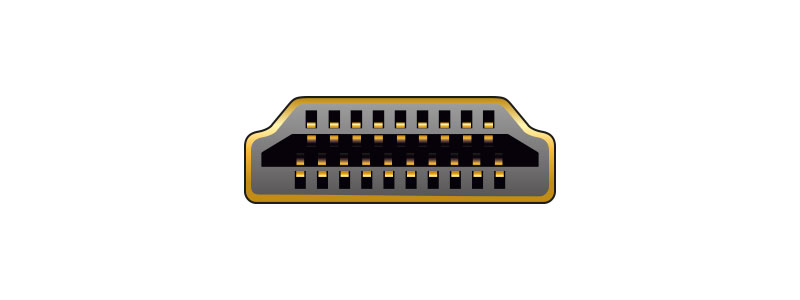In this article:
- What is HDMI, and what is it used for?
- What are typical long cable runs for HDMI connections?
- What types of HDMI cables are suitable for longer runs?
- What resolutions can HDMI connections support?
- How can signal integrity be maintained for longer HDMI cable runs?
- What are HDMI Mini Type C connections, and where are they commonly used?
- What are typical long cable runs for HDMI Mini Type C connections?
- Why do HDMI Mini Type C connections often require shorter cable runs?
- How can signal integrity be maintained for longer HDMI Mini Type C cable runs
- What are HDMI Type A connections, and where are they commonly used?
- What are typical long cable runs for HDMI Type A connections?
- How can signal integrity be maintained for longer HDMI Type A cable runs?
What is HDMI, and what is it used for?
HDMI (High-Definition Multimedia Interface) is a digital video and audio interface standard widely used for connecting devices such as TVs, monitors, projectors, Blu-ray players, gaming consoles, and streaming devices. It allows for the transmission of high-quality audio and video signals through a single cable.

What are typical long cable runs for HDMI connections?
For standard HDMI cables, long cable runs beyond 50 feet (15 meters) are not advisable without signal boosters or active cables. Beyond this distance, signal degradation may occur, leading to reduced video quality, audio dropouts, or loss of signal.
What types of HDMI cables are suitable for longer runs?
HDMI cables designed for extended distances, often referred to as “active” or “high-speed” HDMI cables, incorporate signal boosting technology to maintain signal integrity over longer distances. With active HDMI cables, cable runs of up to 100 feet (30 meters) or more may be possible without significant signal degradation.
What resolutions can HDMI connections support?
HDMI connections can support a wide range of resolutions, including standard-definition (SD), high-definition (HD), and ultra-high-definition (UHD) resolutions. Common resolutions include 720p, 1080p, 4K, and even 8K, depending on the HDMI version and the capabilities of the connected devices.
How can signal integrity be maintained for longer HDMI cable runs?
Using high-quality HDMI cables, minimising cable length, and avoiding sharp bends or tight cable coils can help maintain signal integrity and ensure reliable performance over longer distances. Additionally, active HDMI cables, signal boosters, or HDMI over Ethernet (HDMI Extender) solutions may be necessary for longer cable runs.
HDMI is a versatile digital interface standard used for connecting various audio-visual devices. While HDMI cables are suitable for short to moderate cable runs, signal degradation can occur over longer distances. Utilizing active HDMI cables or signal boosters can help maintain signal integrity for longer runs, ensuring reliable transmission of high-quality audio and video signals.
What are HDMI Mini Type C connections, and where are they commonly used?
HDMI Mini Type C connections are smaller versions of standard HDMI connectors, commonly used in portable devices like camcorders, digital cameras, and smartphones to connect to displays or TVs. They facilitate high-quality audio and video transmission in compact, portable setups.


FEMALE MALE
What are typical long cable runs for HDMI Mini Type C connections?
For HDMI Mini Type C connections using standard HDMI cables, cable runs beyond 15 feet (5 meters) are not advisable without signal boosters or active cables. Longer distances may lead to signal degradation, resulting in diminished video quality or audio interruptions.
Why do HDMI Mini Type C connections often require shorter cable runs?
Devices utilising HDMI Mini Type C connections are typically used in close proximity to the display or TV, such as for presentations, photography, or video recording. Hence, shorter cable runs are often sufficient due to the nature of these applications.
How can signal integrity be maintained for longer HDMI Mini Type C cable runs
For longer cable runs exceeding typical limits, using active HDMI cables or HDMI over Ethernet (HDMI Extender) solutions may be necessary to maintain signal integrity. Additionally, employing high-quality HDMI cables and minimizing cable length can help ensure reliable performance over extended distances.
What are HDMI Type A connections, and where are they commonly used?
HDMI Type A connections are the most common type of HDMI connector, found in devices like TVs, monitors, gaming consoles, and media players. They serve as versatile interfaces for high-definition audio and video transmission.


FEMALE MALE
What are typical long cable runs for HDMI Type A connections?
Using standard HDMI cables, cable runs beyond 50 feet (15 meters) are not recommended without signal boosters or active cables. Longer distances may result in signal degradation, affecting video quality or audio reliability.
How can signal integrity be maintained for longer HDMI Type A cable runs?
Specialised HDMI cables, labeled as “active” or “high-speed,” utilize signal boosting technology to maintain integrity over longer distances. Employing such cables, along with high-quality HDMI cables and cable management practices, can help ensure reliable performance over extended distances.
HDMI Mini Type C connections, commonly found in portable devices, often require shorter cable runs due to their typical usage scenarios. For longer runs, active HDMI cables or HDMI over Ethernet solutions may be necessary. Similarly, for standard HDMI Type A connections, specialized cables with signal amplification can support longer runs while maintaining signal integrity. High-quality cables and proper cable management practices are crucial for reliable audio and video transmission over extended distances.